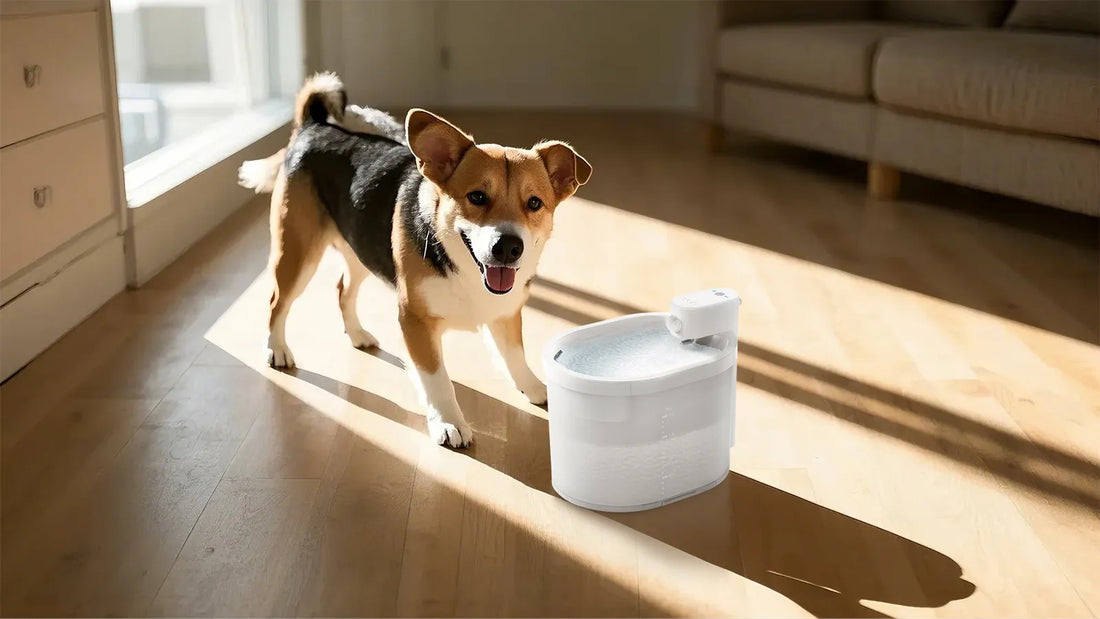As a pet owner, ensuring your cat's health and well-being is a top priority. One of the most common ways to keep your feline friend hydrated is by using a cat water fountain. However, did you know that these devices can sometimes lead to sickness in cats? Understanding the potential risks and how to mitigate them is crucial for every responsible pet owner.
How Cat Water Fountains Work
Cat water fountains are designed to provide a continuous flow of fresh water, which many cats find more appealing than stagnant water in a bowl. These devices typically consist of a water reservoir, a pump, and a filtration system. The pump circulates the water, while the filter removes impurities, ensuring that the water remains clean and safe for your cat to drink.
Potential Risks of Cat Water Fountains
While cat water fountains offer numerous benefits, they are not without their drawbacks. One of the primary concerns is the potential for bacterial growth. If the fountain is not cleaned regularly, bacteria can accumulate in the water, leading to contamination. This can result in various health issues for your cat, including gastrointestinal problems, urinary tract infections, and even more severe illnesses.
Another risk is the presence of mold or algae in the fountain. These organisms can thrive in moist environments, especially if the fountain is placed in a warm or humid area. Ingesting water contaminated with mold or algae can cause respiratory issues, skin irritation, and other health problems in cats.
Signs of Sickness in Cats
It's essential to monitor your cat for any signs of sickness that may be related to their water fountain. Common symptoms include vomiting, diarrhea, lethargy, loss of appetite, and changes in urination patterns. If you notice any of these signs, it's crucial to consult your veterinarian immediately. Early detection and treatment can prevent more severe health complications.
Preventing Cat Water Fountain Sickness
Fortunately, there are several steps you can take to reduce the risk of sickness associated with cat water fountains. First and foremost, regular cleaning is essential. Disassemble the fountain and clean all its components thoroughly at least once a week. Use a pet-safe cleaning solution to remove any bacteria, mold, or algae that may have accumulated.
Additionally, replace the water filter as recommended by the manufacturer. A clogged or expired filter can compromise the quality of the water, making it unsafe for your cat to drink. It's also a good idea to change the water daily, even if the fountain has a filtration system.
Place the fountain in a cool, dry area to minimize the risk of mold and algae growth. Avoid placing it near windows or in direct sunlight, as this can promote the growth of harmful organisms. Finally, monitor your cat's behavior and health closely. If you notice any signs of sickness, take immediate action to address the issue.
Alternative Hydration Solutions
If you're concerned about the potential risks of cat water fountains, there are alternative hydration solutions you can consider. One option is to provide multiple water bowls throughout your home. This ensures that your cat always has access to fresh water, even if one bowl becomes contaminated.
Another alternative is to use a gravity-fed water dispenser. These devices rely on gravity to provide a continuous flow of water, eliminating the need for a pump. While they may not be as appealing to some cats, they are generally easier to clean and maintain.
You can also encourage your cat to drink more water by adding wet food to their diet. Wet food has a higher moisture content than dry kibble, helping to keep your cat hydrated. Additionally, you can try offering your cat ice cubes or flavored water to make drinking more enticing.
Consulting Your Veterinarian
If you're unsure about the best hydration solution for your cat, it's always a good idea to consult your veterinarian. They can provide personalized recommendations based on your cat's specific needs and health status. Your vet can also help you identify any underlying health issues that may be affecting your cat's hydration levels.
Regular check-ups are essential for monitoring your cat's overall health and well-being. During these visits, your veterinarian can assess your cat's hydration status and provide guidance on how to keep them healthy and hydrated.
By taking these precautions and staying vigilant, you can help ensure that your cat stays hydrated without the risk of sickness. Remember, a healthy cat is a happy cat, and providing clean, safe water is one of the most important ways to support their well-being.
Don't let the potential risks of cat water fountains deter you from keeping your feline friend hydrated. With proper care and maintenance, these devices can be a safe and effective way to ensure your cat gets the water they need. Stay informed, take action, and enjoy the peace of mind that comes with knowing your cat is healthy and happy.













